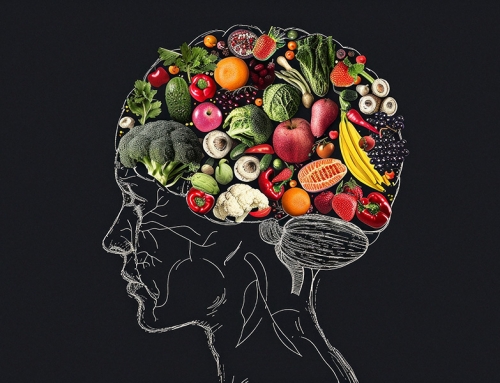Introduction
As the field of nutrition advances, the data it produces is becoming more intricate and multifaceted, necessitating novel methods for analysis. Malnutrition is the root cause of an increasing number of chronic illnesses that have multiple causes, leading to the generation of intricate data sets. However, with recent advances in technology and coding, Machine Learning (ML), a subfield of Artificial Intelligence (AI), can be a valuable tool for tackling these types of complex analyses. The properties of ML make it a more feasible alternative to traditional methods of handling such data.
What is Machine Learning?
The field of machine learning (ML) in AI deals with algorithms. Mathematical models for decision-making could be produced by ML algorithms. Without any programming, these models are built using sizable training data sets. In the latter decade of the 20th century, search engine applications helped make the use of ML algorithms more widely accepted. With the introduction of more sophisticated ML algorithms in the following decades, there were high hopes for substantial breakthroughs in organic synthesis [1]. There is evidence that suggests machine learning is the future in the field of digital diagnosis and biomedical research [2].
There are four types of Machine learning (ML): supervised learning, unsupervised learning, semi-supervised learning, and reinforcement learning. In supervised learning, computers are given labelled data, where the input represents the features or attributes of the data and the output represents the corresponding label or class. In unsupervised learning, no labeled data is provided, and algorithms try to discover the relationship between the data. In semi-supervised analysis, some data is labelled, but most of it is not labelled. A mixture of supervised and unsupervised techniques can be used. Reinforcement learning is a type of machine learning in which the computer learns through trial and error. The computer interacts with an environment and learns from the feedback or rewards it receives based on its actions [3, 4].
Machine learning in nutrition research and analysis
The characteristics and features of Machine learning (ML) makes it possible to analyze huge amounts of data, which can benefit research and analysis. In recent years, machine learning has become increasingly important in the field of nutrition research and analysis, offering a range of benefits that were previously unattainable with traditional statistical methods [5, 6].
One of the primary advantages of using ML in nutrition research and analysis is its ability to handle vast and complicated datasets. Massive amounts of data may be processed by machine learning algorithms rapidly and effectively, enabling researchers to find patterns and associations that might have escaped their attention using conventional statistical methods. This can result in more accurate and trustworthy findings in nutrition research and the creation of better interventions and treatments [1,5,6,7].
Another greater advantage of machine learning in nutrition research and analysis is the ability to provide personalized health and nutrition plans based on individual data. Due to advancements in the field of science and technology, the invention of wearable devices such as smartwatches or sensor devices like glucose monitoring devices helps to monitor daily physical activities, provide dietary plans, and keep track of various health-related issues like diabetes, heart-related abnormalities, and obesity [7].
Mobile health applications (mHealth) are related to health and wellness, and their number is continuously increasing. mHealth apps easily help a person keep track of his health and get personalized health consultations by providing the required data. Such applications can be useful in the field of nutritional epidemiology since, in a populated country like India, it is nearly impossible to collect health data in just clinics. This process can be less time-consuming and more efficient for the researchers; it can also overcome difficulties like the repetition of data or even the biased selection of the subjects [6, 7]. A larger data set, with an increased sample size will result in a more accurate analysis. Utilizing ML-based natural language processing techniques, which translate speech into text or input variables, is another option to lessen the taxing work of gathering nutritional data. For instance, by combining a smartwatch with an audio-based chewing and swallowing detector to identify eating activities [7],
Machine learning can also be used to advance disease diagnosis and prevention in the field of nutrition. For example, machine learning algorithms can be used to analyze data from medical imaging, such as Magnetic Resonance Imaging (MRI) and Computed Tomography (CT) scans, to detect early signs of disease and monitor disease progression. This can lead to earlier detection and treatment of diseases, resulting in better health outcomes for patients [8].
Conclusion
In the coming future, by offering strong tools for data processing, pattern identification, and prediction, machine learning has the potential to revolutionise nutrition research and analysis. Despite the many benefits machine learning possesses, some drawbacks are to be considered, like the fact that with the increase in the quantity of data collected, the quality of the data collected can be compromised, and due to data transparency, few people might use it for unethical purposes. Nevertheless, ethical use of the data and more knowledge about machine learning will help the researcher unlock its greater potential and improve the health of mankind in the future.
References
-
- Sak, J., & Suchodolska, M. (2021). Artificial Intelligence in Nutrients Science Research: A Review. Nutrients, 13(2), 322. //doi.org/10.3390/nu13020322
- Handelman, G. S., Kok, H. K., Chandra, R., Razavi, A. H., Lee, M. J., & Asadi, H. (2018). eDoctor: machine learning and the future of medicine. Journal of Internal Medicine, 284(6), 603–619. //doi.org/10.1111/joim.12822
- GeeksforGeeks. (2023). ML Types of Learning Supervised Learning. GeeksforGeeks. //www.geeksforgeeks.org/ml-types-learning-supervised-learning/
- Brownlee, J. (2020). Supervised and Unsupervised Machine Learning Algorithms. MachineLearningMastery.Com. //machinelearningmastery.com/supervised-and-unsupervised-machine-learning-algorithms/
- Gibney, M. J., & Walsh, M. E. (2013). The future direction of personalised nutrition: my diet, my phenotype, my genes. Proceedings of the Nutrition Society, 72(2), 219–225. //doi.org/10.1017/s0029665112003436
- Kirk, D. N., Kok, E., Tufano, M., Tekinerdogan, B., Feskens, E. J. M., & Camps, G. (2022). Machine Learning in Nutrition Research. Advances in Nutrition, 13(6), 2573–2589. //doi.org/10.1093/advances/nmac103
- Russo, S., & Bonassi, S. (2022). Prospects and Pitfalls of Machine Learning in Nutritional Epidemiology. Nutrients, 14(9), 1705. //doi.org/10.3390/nu14091705
- Khasawneh, A. M., Bukhari, A. A., & Al-Khasawneh, M. A. (2022). Early Detection of Medical Image Analysis by Using Machine Learning Method. Computational and Mathematical Methods in Medicine, 2022, 1–11. //doi.org/10.1155/2022/3041811
Affiliation:
- Dean and Distinguished University Professor at School of Public Health, University of Memphis, TN, USA
- Foundation of Healthcare Technologies Society, New Delhi, India






Leave A Comment